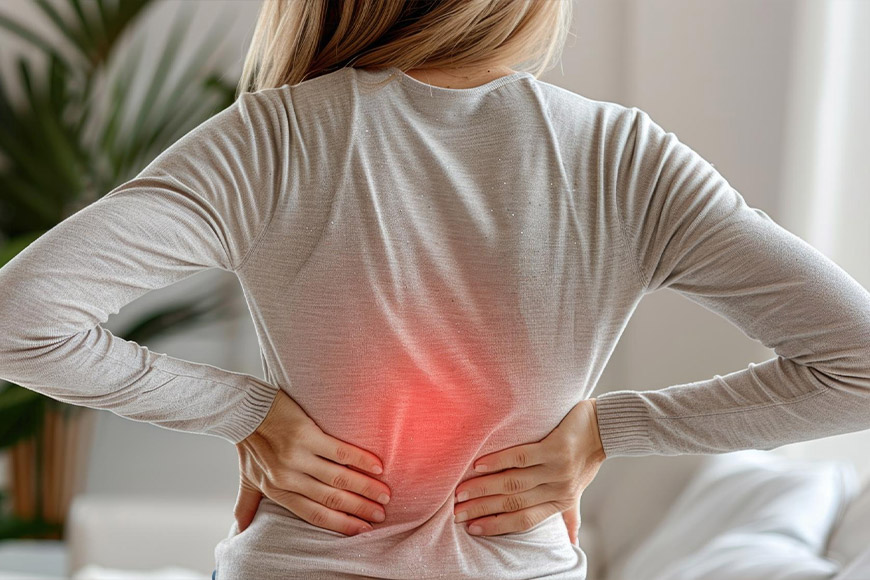
What back pain tells you: types, symptoms and causes
What does back pain tell you: types, symptoms and causes, Belgrade. TOP PRICE✓ Treatment: sciatica, disc herniation, spondylosis, scoliosis, disc degeneration✓
What back pain tells you: types, symptoms and causes
It is hard to find someone who has never experienced back pain, which, regardless of its cause, is never pleasant or mild. Intense back pain has become one of the most widespread health problems of today, largely due to lifestyle, prolonged sitting, irregular physical activity, and similar factors.
The back bears the weight of your activities. The spine is what makes you upright or bent under the load. Much depends on it, and often we are not even aware of the strain we put on it. Therefore, it is worth paying attention to what causes back pain, how to interpret different symptoms, and how to prevent more serious spinal problems.
Acute and chronic back pain and their symptoms
Back pain can manifest in various ways. The two main types of pain are acute and chronic back pain. Acute back pain is temporary – it lasts for a few days and then disappears without leaving any lasting effects.
It is usually mild to moderate, and its intensity does not prevent the person from performing daily activities to a large extent, though some more intense pain of this type may limit mobility, but only for a short period.
Chronic pain is somewhat more serious, as it lasts a longer period. It develops gradually, increasing in intensity, and the condition of a person with chronic pain requires professional evaluation and therapy. This type of pain usually lasts for months, affects mobility and daily life, but many people "learn" to live with it.
Some symptoms that may accompany both types of back pain, especially when the pain is more intense, include dizziness, pain in the arms and legs, insomnia, weight loss, depression, and similar issues.
The pain can sometimes be intense and widespread, while other times it is focused on one point in the back. Depending on where the back pain is predominantly felt, we distinguish between several types of problems.
Pain in the neck and upper back
The upper back includes the neck, shoulders, and shoulder blades, and pain in this area is usually caused by stretching of ligaments and tendons, sudden movements, and shoulder strain. More serious causes include weak abdominal muscles, poor posture, and weakness of the back muscles. Neck pain is often accompanied by migraines and dizziness.
Pain in the spine due to poor posture
Pain in the middle of the back occurs between the neck and the bottom rib. It is usually associated with spinal pain, which can extend to the surrounding muscles, sometimes causing tingling in the back, muscle tightness, numbness in the legs or arms, and chest pain. If you have these symptoms and persistent spinal pain, it is likely due to poor posture and excessive pressure on the spine, caused by improper sitting or even overweight.
Spinal pain can sometimes be caused by herniated discs, also known as herniated disks, which occur when the inner, soft core presses on a nerve. Such conditions often require home physical therapy, which is very helpful for people with various types of problems that lead to difficult movement.
Pain in the lower back
Pain in the lower back manifests at the base of the back or lumbar region. It is usually caused by lifting heavy loads suddenly, excessive muscle stretching, or obesity. Sometimes, lower back pain is a red flag as it can indicate other conditions such as arthritis, spinal deformities, or viral infections.
What causes back pain?
Although poor posture is the most common problem causing back pain, it is worth expanding and clarifying all the factors that lead to back issues. Primarily, it is insufficiently active muscles, which is a problem for most people today.
People are insufficiently active, spending time sitting in offices (often in improper postures), which inevitably leads to pain in some or even all parts of the back. Simple daily walking is not enough – the body needs to be activated through exercises several times a week to ensure that the muscles work properly.
Another serious cause of back pain is body weight. The body carrying excess weight puts a strain on the back and the spine itself, causing pain. Stress is also a factor, as nervous tension can indeed cause physical pain that you feel in your back.
Sometimes, inadequate footwear can cause back pain due to unnatural foot positioning, which affects the spine. The usual problems are high heels, poor quality soles, and excessively flat shoes. For the back, the best footwear has a slightly raised heel.
How to treat back pain?
Back pain should not be ignored for two reasons. First, back pain cannot be completely ignored as it affects daily activities, limiting mobility. Second, back pain is often associated with other health issues, making ignoring the pain extremely dangerous.
The first recommendation is to take care of your lifestyle – starting with incorporating physical activity, to choosing better and more comfortable footwear. It is also worth paying attention to nutrition, which greatly affects body weight, which can sometimes be a serious enemy of a healthy spine.
However, if you have chronic pain, it is important to promptly seek professional help to diagnose or provide appropriate therapy. This is the only way to prevent more serious conditions that may be related to the spine.